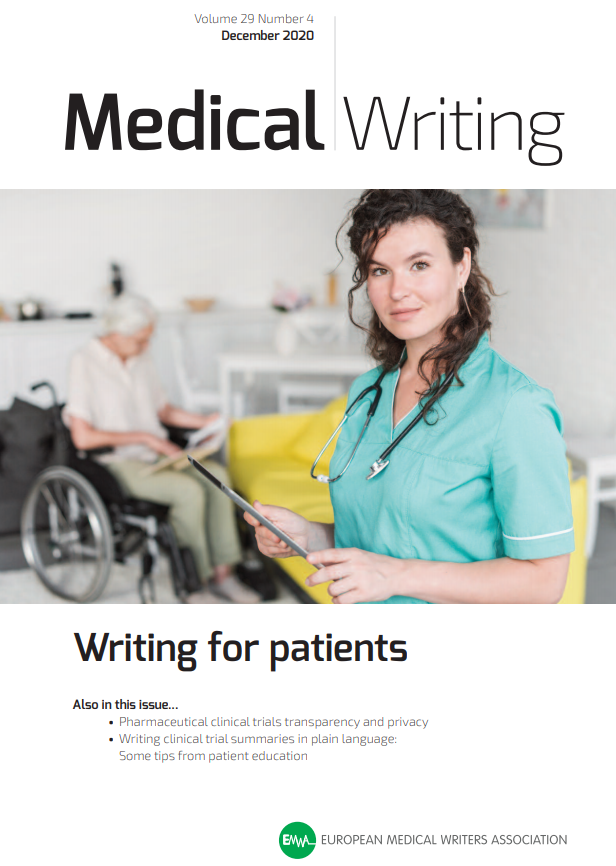
Volume 29, Issue 4 - Writing for Patients
Writing for patients: When and how?
Authors: Lisa Chamberlain James, Deborah Collyar, Allen Todd, Catina O'Leary
Abstract
The move towards patient engagement and patient involvement in healthcare decisions (“shared care”) has triggered a raft of new guidances from regulatory authorities, accompanied by new regulations mandating that pharmaceutical companies engage with patients and the general public in a way that has been improbable up to now. While this has generally been supported and welcomed by both industry and patients, the initiative has brought with it considerable challenges. Producing complex scientific and medical information in health-literate language that is appropriate and helpful for the general public (“plain language”) requires skills beyond those usually required for communicating with healthcare professionals and regulatory authorities. Medical writers are highly trained in a specific technical writing style and tone that is aimed at readers with a very high level of literacy, and often considerable scientific and medical knowledge. Translating this information into plain language for readers who may have low health literacy, and perhaps little or no scientific or medical knowledge, is a significant challenge – as reflected in the level of information currently available
 Download the full article
Download the full article
Search
Articles
Links
Editoral Board
Editor-in-Chief
Co-Editors
Managing Editor
Victoria White
Deputy Managing Editor
Alicia Brooks Waltman
Associate Editors
Section Editors
AI/Automation
Biotechnology
Digital Communication
EMWA News
Freelancing
Gained in Translation
Getting Your Foot in the Door
Good Writing Practice
Pablo Izquierdo / Alison McIntosh
In the Bookstores
Publications
Medical Communications/Writing for Patients
Medical Devices
My First Medical Writing
News from the EMA
Pharmacovigilance
Regulatory Matters
Regulatory Public Disclosure
Louisa Ludwig-Begall / Sarah Kabani
The Crofter: Sustainable Communications
Veterinary Writing
Editors Emeritus
Layout Designer
Chris Monk
 Visit the EMWA website
Visit the EMWA website